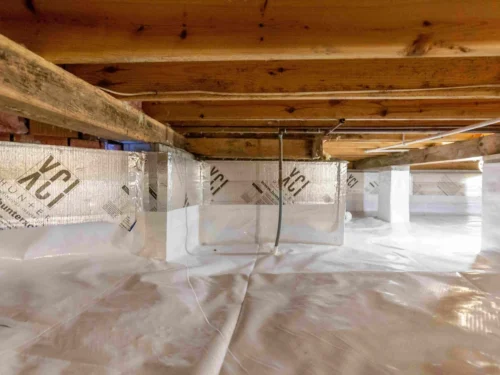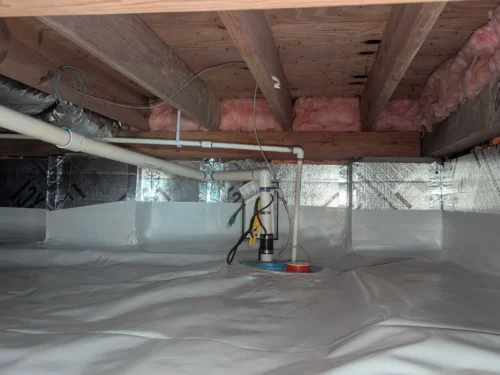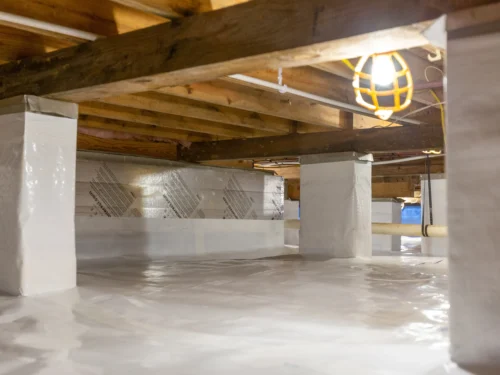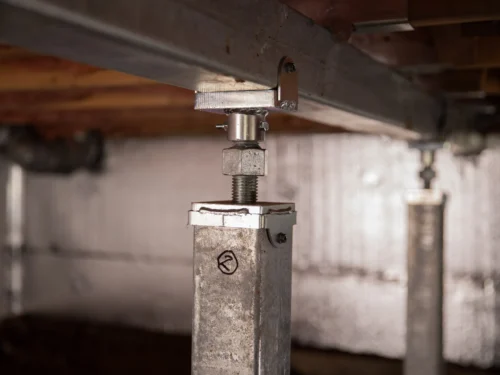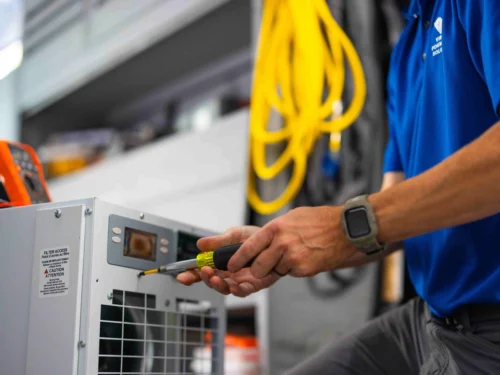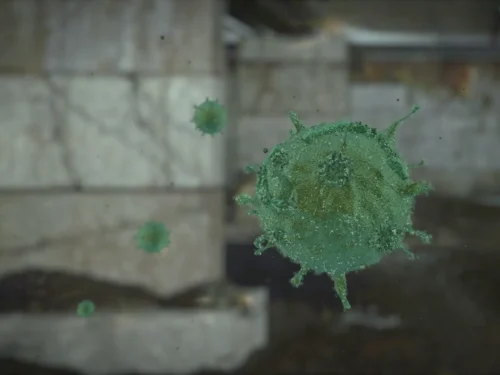If your home has a crawl space, you might be ignoring one of the biggest energy drains and moisture traps in the entire structure.
Crawl spaces are often treated as “out of sight, out of mind.” They’re rarely visited, and they’re easy to overlook during home upgrades. But here’s the truth: an untreated crawl space can seriously damage your home’s energy efficiency, indoor air quality, and structural integrity.
It’s about controlling humidity, preventing condensation, avoiding mold, protecting your foundation, and keeping your indoor air clean.
And here’s where it gets technical but critical: when warm interior air meets the cold surfaces in a crawl space, condensation forms. That moisture soaks into wooden beams, attracts pests, damages insulation, and creates the perfect breeding ground for mold. Meanwhile, your HVAC system fights a losing battle trying to keep the home warm, leading to inflated energy bills and uncomfortable living spaces.
The good news? You can fix this.
Whether you’re trying to figure out the best way, wondering if it’s even necessary, or looking for long-term solutions that actually improve your home, this guide is for you!
Most crawl spaces are poorly insulated and sit right on top of cold, damp earth. Without proper crawl space heating and moisture control, they become the perfect storm: cold air seeps up into your living space, moisture leads to mold and wood rot, and your HVAC system works overtime to make up for the energy loss.
Here’s what happens when your crawl space is left untreated:
- Cold floors: The space under your home becomes a heat sink, cooling everything above it.
- High humidity: Moisture from the ground rises into your crawl space — and eventually into your home.
- Mold and wood rot: Fungal growth loves a moist, unheated space. So do pests.
- Frozen pipes: In freezing weather, exposed pipes can crack or burst, causing costly damage.
- Wasted energy: Every degree of heat lost to the crawl space is money out of your pocket.
When you combine poor insulation, no heat, and untreated moisture, your crawl space goes from a structural buffer to a hidden threat.
So, how do we flip the script?

How to Keep a Crawl Space Warm?
Step 1: Fix the Moisture Problem First
Heating a wet crawl space is like putting a space heater in a swamp — you’re solving the wrong problem first. Before any heat gets added, address moisture:
- Standing water? Check for improper grading around your home — the soil should slope away from the foundation at 5% grade or more.
- Plumbing leaks? Inspect pipes. Even a pinhole leak in a copper line adds gallons of moisture over time.
- Soil moisture? Dry-looking dirt can still evaporate moisture. Install a vapor barrier over all exposed soil.
And don’t forget: open crawl space vents can make things worse. Vents bring in damp, humid air during summer and cold air during winter — leading to higher relative humidity and heat loss. Seal them.
Step 2: Install a Vapor Barrier
A vapor barrier is non-negotiable. Here’s why installing a vapor barrier in your crawl space matters so much — it’s your first line of defense against moisture rising from the ground.
Here’s what to look for:
- Material: Use a 6 to 20-mil polyethylene plastic sheet.
- Installation: Cover the entire floor and extend it up the walls by at least 6 inches.
- Seams: Overlap seams by 12 inches and seal them with waterproof tape.
This one step can reduce crawl space humidity by 50% or more.
Step 3: Insulate and Seal Like a Pro
If you don’t seal and insulate, any heat you add will just leak out — and take your energy dollars with it.
Where to Insulate:
- Walls: Use rigid foam board or spray foam insulation.
- Joists: Use moisture-resistant fiberglass batts between joists (vapor barrier side facing up).
- Foundation vents: Seal completely with rigid foam and caulk.
Don’t forget to seal all air leaks around pipes, wires, and duct penetrations.
Step 4: Choose the Right Crawl Space Heating System
Now that moisture is under control and the space is sealed, it’s time to heat it. But don’t just throw a space heater under there and hope for the best. Choose smart, proven heating crawl space options:
Option 1: Extend Your HVAC
If your HVAC system is strong enough, extend a supply duct into the crawl space with a return. This maintains consistent temperatures with minimal maintenance.
Option 2: Install a Crawl Space Heater
Electric baseboard heaters or compact wall-mounted units work great for small spaces. Make sure they’re thermostat-controlled for efficiency.
Option 3: Use Heating Cables or Heat Tape
For homes in colder climates, these prevent pipes from freezing. Place along key plumbing lines or near perimeter walls where temps drop fastest.
Option 4: Dehumidifier with Built-In Heat
Some high-end crawl space dehumidifiers also include a heating element. This tackles two problems at once: high humidity and cold air.
Step 5: Add Passive Heating Techniques
These solutions help hold onto the heat you add — or even share heat from your living space.
- Transfer fans: Install a fan that moves warm air from your home into the crawl space.
- Thermal mass: Place water containers in the crawl space. They absorb heat during the day and release it at night.
- Extra floor insulation: Beef up the insulation between joists to stop heat transfer from living areas above.
Maintaining Your Heated Crawl Space
Even the best setup needs maintenance. Here’s your seasonal checklist:
- Monitor humidity: Keep a digital thermo-hygrometer in the crawl space. Target under 60% RH.
- Check for leaks: Inspect plumbing and vapor barriers regularly.
- Inspect insulation: Look for sagging or damp insulation.
- Test heating systems: Electric heaters and transfer fans should be checked annually.
Use this in-depth crawl space inspection checklist for a step-by-step guide to what you should look for seasonally.
Benefits of a Heated Crawl Space
The ROI from a heated crawl space is real and fast:
- 15–25% reduction in heating costs
- Better indoor air quality (remember: 50%+ of the air in your home comes from the crawl space)
- Protection from pests and mold
- Longer-lasting plumbing and insulation
- Increased home resale value
Think of your crawl space like a basement — just shorter. Would you leave your basement wet and freezing? Probably not. Then don’t ignore your crawl space.
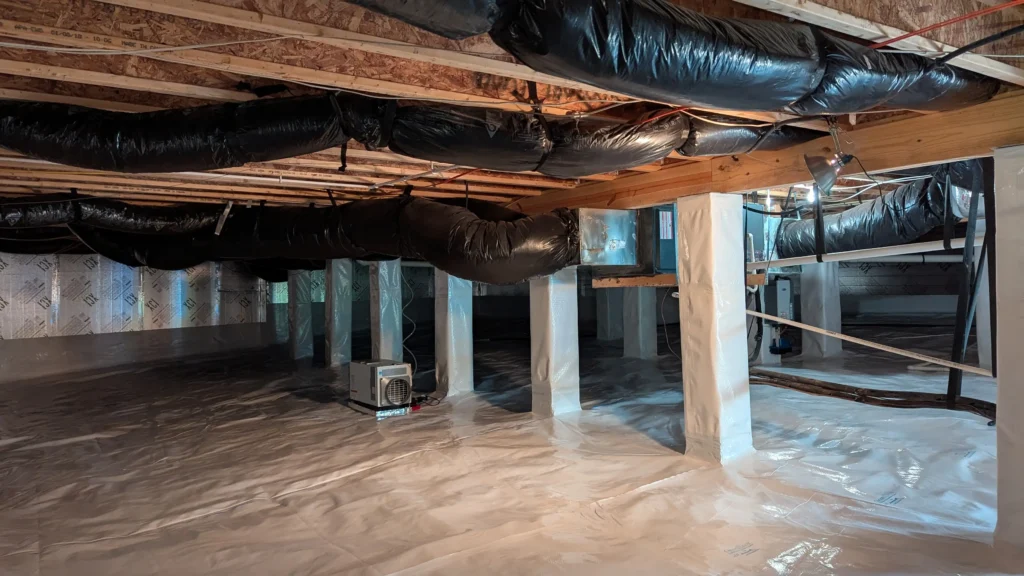
Final Thoughts: Should I Heat My Crawl Space?
If your crawl space is unsealed, uninsulated, or untreated, then yes — absolutely. Heating a crawl space protects your home’s structure, air quality, comfort, and your wallet.
But don’t cut corners. Crawl space heating only works when you first fix moisture, seal leaks, and insulate properly.
We help homeowners across Virginia solve crawl space problems permanently. Whether you’re dealing with high humidity, cold floors, or rising energy costs — we’ll show you exactly what needs to be done, and we’ll do it right the first time.
Our team specializes in moisture control, crawl space insulation, and heating solutions that actually work.
Contact us today for a free consultation.

